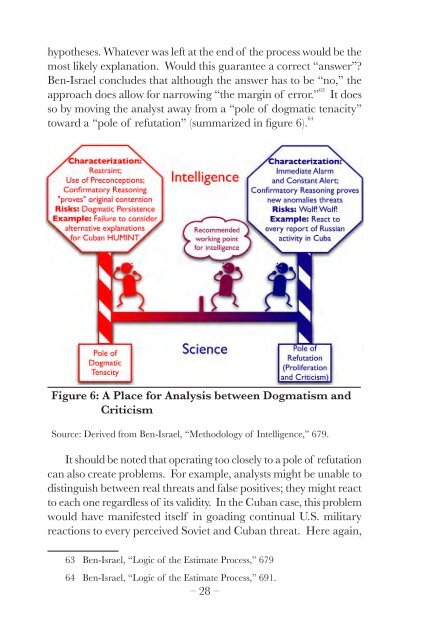Critical Thinking and Intelligence Analysis
Critical Thinking and Intelligence Analysis
Critical Thinking and Intelligence Analysis
You also want an ePaper? Increase the reach of your titles
YUMPU automatically turns print PDFs into web optimized ePapers that Google loves.
hypotheses. Whatever was left at the end of the process would be the<br />
most likely explanation. Would this guarantee a correct “answer”<br />
Ben-Israel concludes that although the answer has to be “no,” the<br />
approach does allow for narrowing “the margin of error.” 63<br />
It does<br />
so by moving the analyst away from a “pole of dogmatic tenacity”<br />
toward a “pole of refutation” (summarized in figure 6). 64<br />
Figure 6: A Place for <strong>Analysis</strong> between Dogmatism <strong>and</strong><br />
Criticism<br />
Source: Derived from Ben-Israel, “Methodology of <strong>Intelligence</strong>,” 679.<br />
It should be noted that operating too closely to a pole of refutation<br />
can also create problems. For example, analysts might be unable to<br />
distinguish between real threats <strong>and</strong> false positives; they might react<br />
to each one regardless of its validity. In the Cuban case, this problem<br />
would have manifested itself in goading continual U.S. military<br />
reactions to every perceived Soviet <strong>and</strong> Cuban threat. Here again,<br />
63 Ben-Israel, “Logic of the Estimate Process,” 679<br />
64 Ben-Israel, “Logic of the Estimate Process,” 691.<br />
– 28 –
















